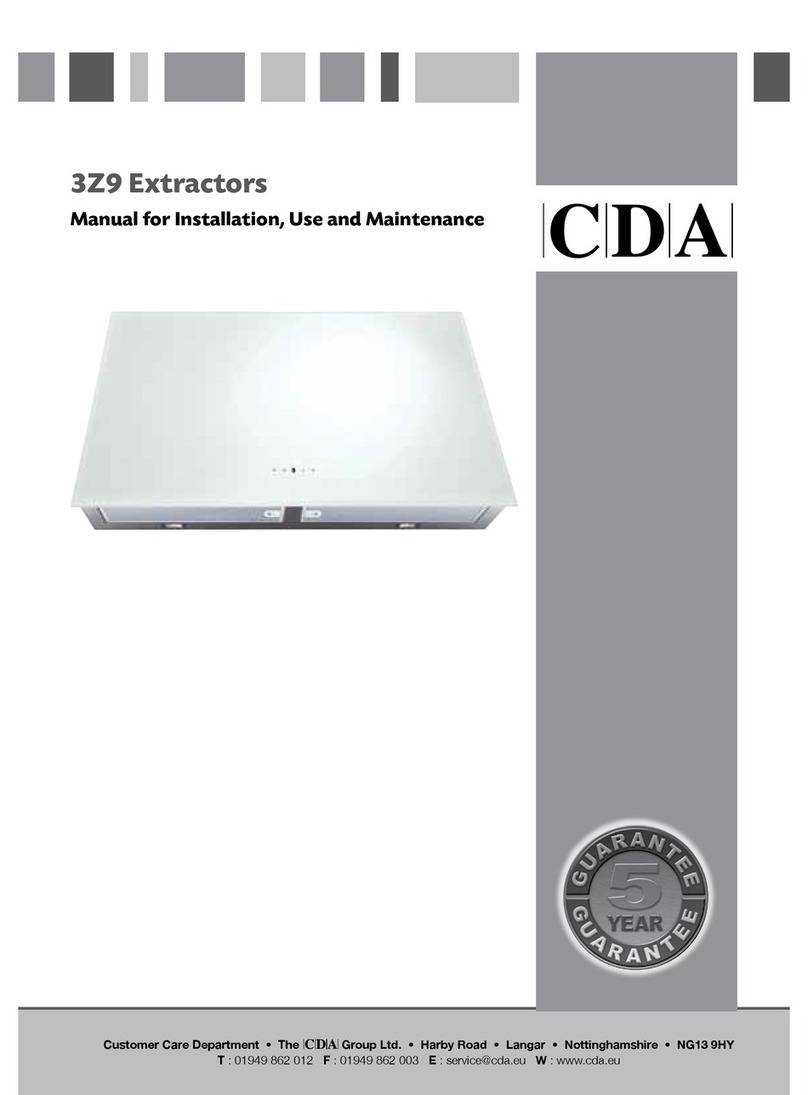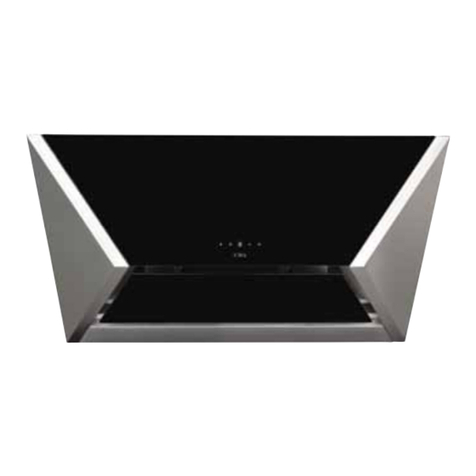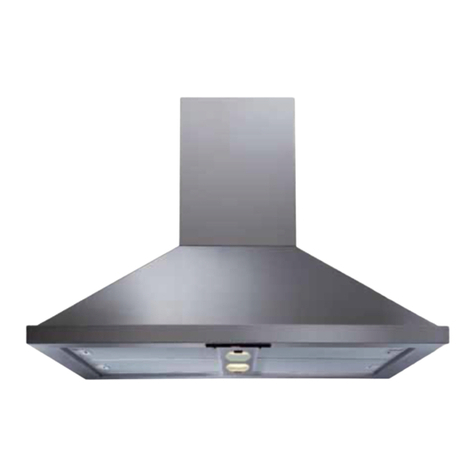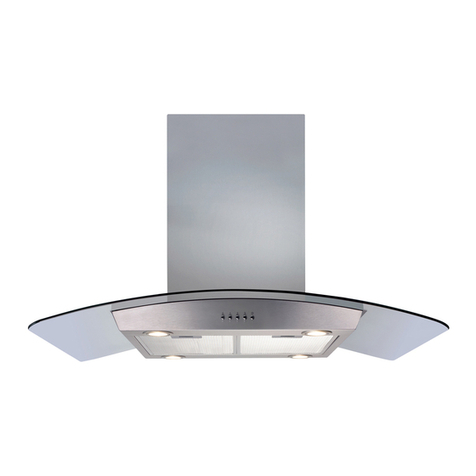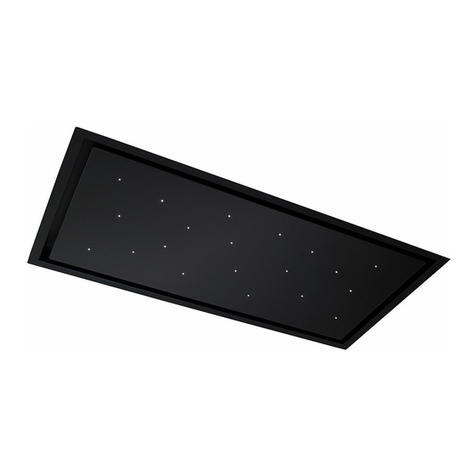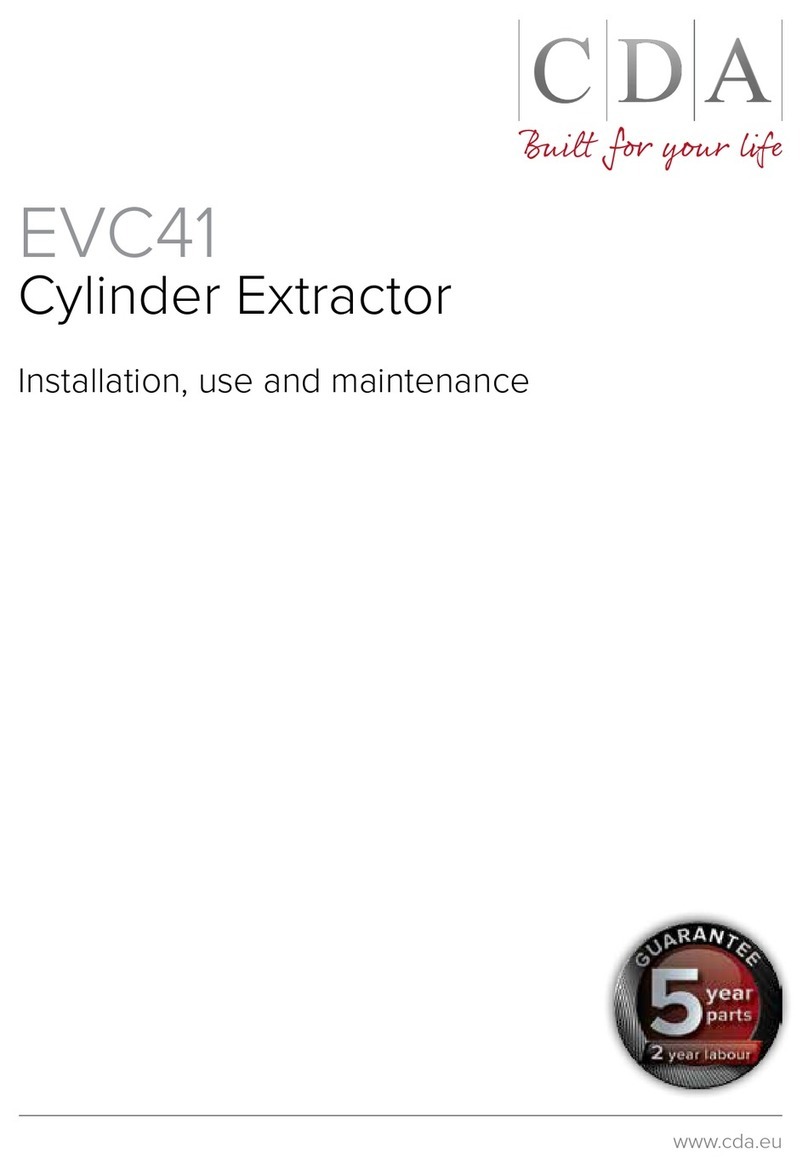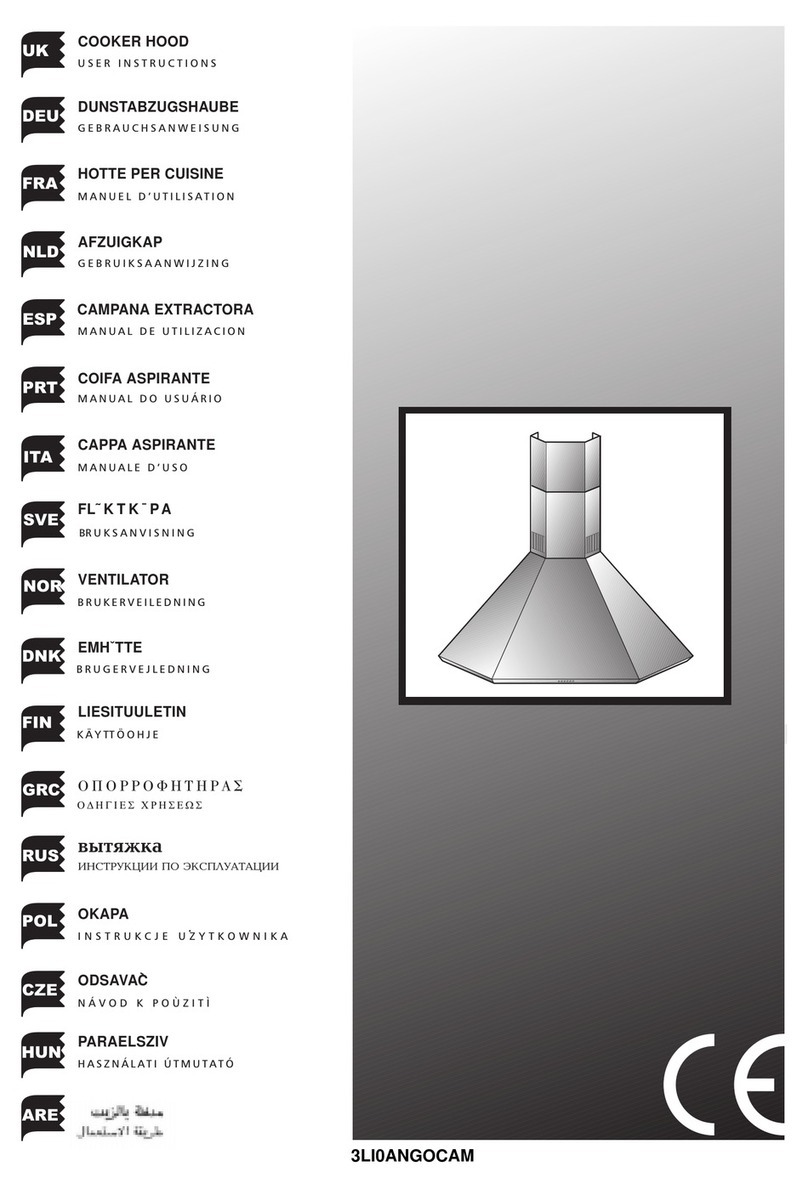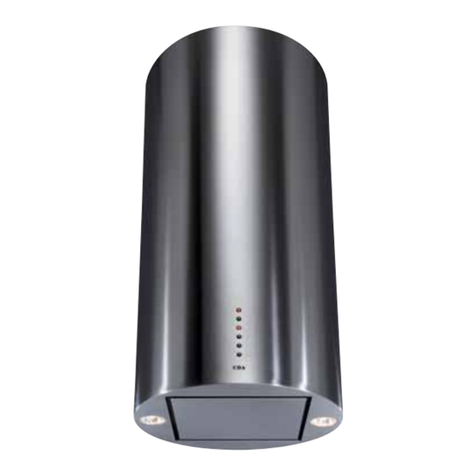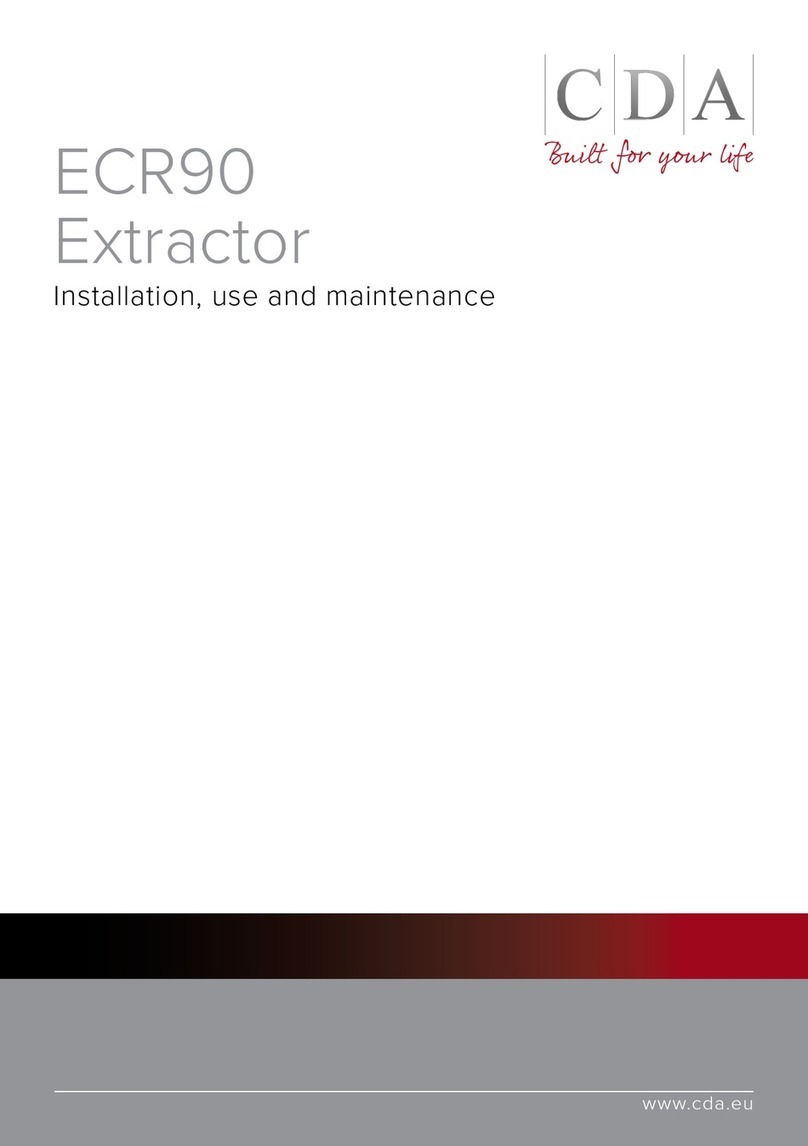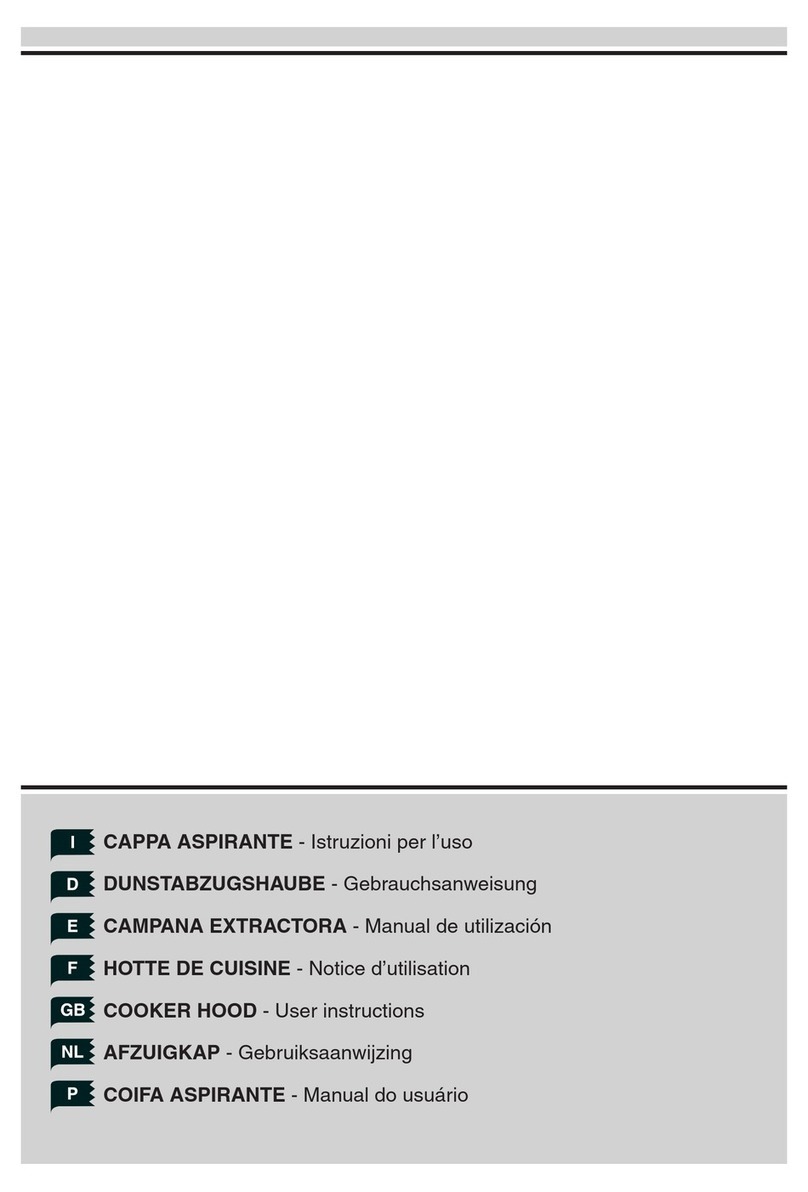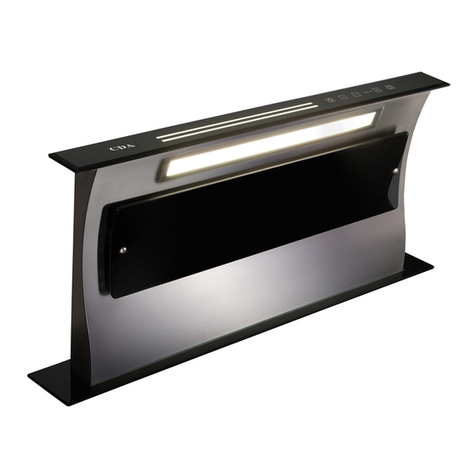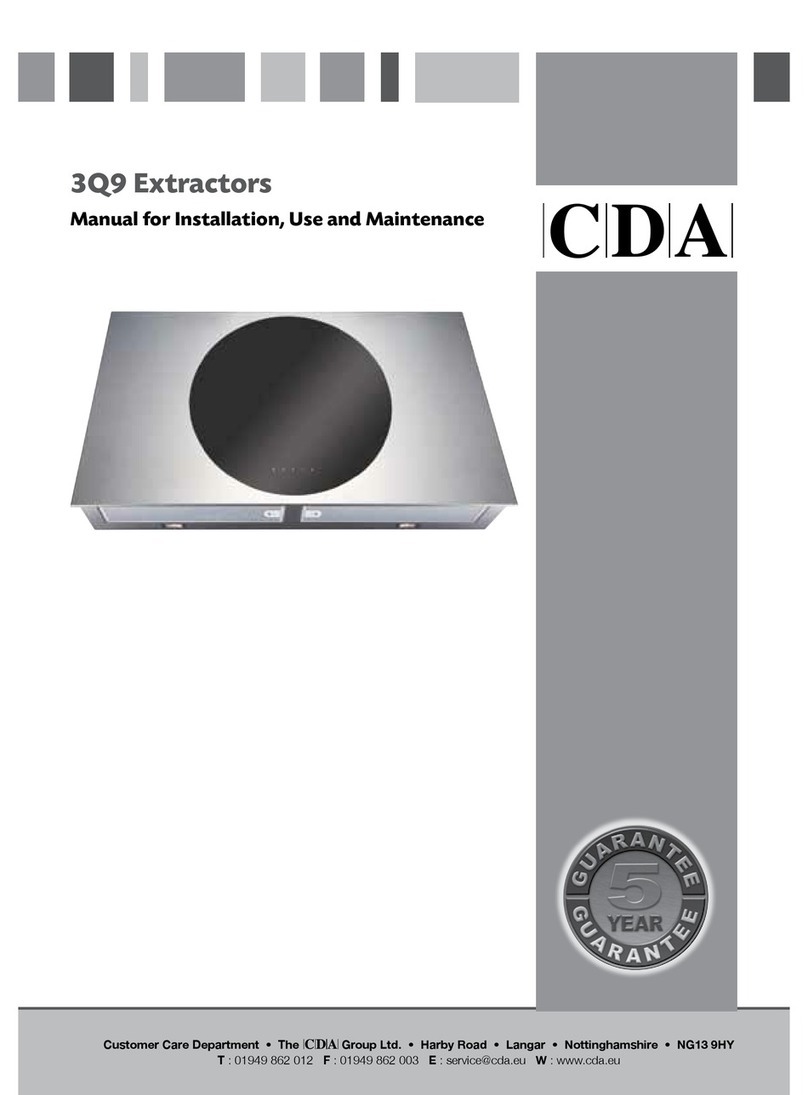8
Removing and cleaning the grease filter - Fig. 2
The grease filter should be kept clean to minimise the risk of fire.
At least once a month you should remove and clean the grease
filters with hot soapy water. You can also wash the grease filter in a
dishwasher, ensuring that you place it in an upright position to prevent
damage from other items in the dishwasher. After rinsing and drying,
replace the filters.
To remove the grease filter, lift open the extractor cover and then
release the catch on the handle on the grease filter. It will release at
the handle side. Then lower the grease filter to remove it completely
(fig. 2). To replace the grease filter, repeat the steps in reverse.
Please note:
Cleaning the grease filter in the dishwasher may lead to
discolouration. This is normal and does not constitute a fault with the
appliance.
Changing the charcoal filter (re-circulating only) - Fig. 3
To ensure best performance of your extractor, you should replace the
charcoal filter every four to six months, depending on use.
To attach a new charcoal filter, first remove the grease filter as
described above. Then oer up the charcoal filter to the inside of the
grease filter as shown in fig. 3. Oer the catches on the bottom of the
charcol filter to the grease filter frame (1) and then clip the top of the
charcoal filter into the grease filter frame around the handle area (2).
Then, replace the grease filters and cover panels.







